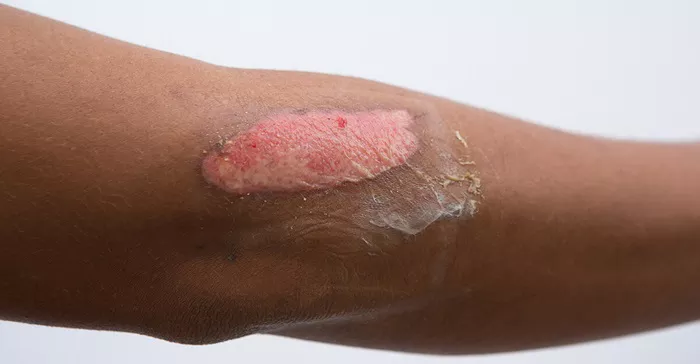The acne scar treatment market, valued at $8.5 billion in 2023, is expected to reach $16.3 billion by 2033, with a compound annual growth rate (CAGR) of 6.7% from 2024 to 2033. Over recent years, the market has seen a dramatic shift. Once dominated by topical ointments, it has evolved into a diversified sector characterized by cutting-edge technology, advanced formulations, and personalized care. This dynamic environment reflects the growing consumer demand for effective, low-downtime solutions and underscores the beauty and dermatology industry’s commitment to innovation and patient-centered results.
Market Drivers
Acne scars affect millions globally, leaving long-lasting physical and psychological impacts. With the rise of social media influencers, online recommendations, and remote dermatology platforms, awareness of skin health is increasing. Patients are actively seeking treatments that can restore smooth, even-toned skin. Accessibility has greatly improved; treatments once only available in specialized dermatology clinics can now be found in medical spas, beauty centers, and even through professionally guided at-home devices.
Key Market Drivers
Technological Breakthroughs
The development of energy-based devices such as fractional lasers, radiofrequency microneedling, and ultrasound-assisted therapies has set new standards for efficacy and comfort. These systems target scar tissue with precision, stimulating collagen remodeling while minimizing damage to the epidermis.
Cosmeceutical Innovations
Topical formulations containing growth factors, peptides, and retinoid derivatives provide complementary treatment options. Manufacturers are investing in microencapsulation and nanodelivery systems to enhance ingredient penetration, stability, and clinical efficacy.
Personalization and Data Analytics
AI-driven skin analysis tools allow dermatologists to tailor treatments based on scar type, skin tone, and the patient’s lifestyle. Mobile apps and cloud platforms help track the progress of multi-treatment regimens, improving patient adherence and satisfaction.
Rising Disposable Income in Emerging Economies
The growing middle class in regions like Southeast Asia and Latin America is driving demand for cosmetic procedures. With improving healthcare infrastructure, these markets are expected to experience double-digit growth in the coming years.
Treatment Approaches: A Synergistic Method
Energy-based Devices:
Fractional ablative and non-ablative lasers dominate many clinics, combining deep dermal remodeling with epidermal safety.
Radiofrequency (RF) microneedling combines mechanical injury with thermal energy to rapidly synthesize collagen and shrink scar pockets.
High-Intensity Focused Ultrasound (HIFU) offers a non-invasive approach for skin tightening and remodeling, ideal for patients seeking minimal social downtime.
Topical Medications and Chemical Peels:
Retinoids and Vitamin C derivatives remain foundational for epidermal renewal and pigment control.
Salicylic acid, glycolic acid, and customized TCA peels address surface irregularities and discoloration while stimulating new collagen formation.
Injectables and Biologics:
Platelet-rich plasma (PRP) utilizes autologous growth factors to accelerate wound healing and collagen matrix formation.
Dermal fillers, such as hyaluronic acid, can instantly improve atrophic scars, often combined with subcision techniques.
Manual and Mechanical Techniques:
Dermabrasion and microdermabrasion procedures continue to play a significant role in treating mild to moderate scar cases, especially when combined with adjunctive laser or RF therapies.
Subcision, the physical release of tethered scar bands, remains the cornerstone of atrophic scar correction.
Regional Insights
North America leads the way in device adoption and R&D investments, with comprehensive reimbursement pathways in some jurisdictions. The U.S. is particularly well-equipped with a dense network of dermatology centers offering full-spectrum treatments.
Europe follows closely, placing great emphasis on safety regulations and clinical validation. Countries like Germany, France, and the UK are hotspots for combined therapies and biotech-enhanced treatments.
Asia-Pacific is the fastest-growing region, fueled by booming medical tourism, rising consumer spending, and a preference for minimally invasive procedures. South Korea’s pioneering aesthetic culture often sets global trends.
Latin America, the Middle East, and Africa are emerging markets where local brands are tailoring products and treatment plans, including pricing, to suit various skin types and scar causes.
Market Challenges and Opportunities
Despite the growing opportunities in the acne scar treatment market, challenges remain, such as regulatory complexities, inconsistent insurance coverage, and the need for extensive training of practitioners on new technologies. Furthermore, patient adherence to multi-treatment regimens may decline without adequate education and follow-up systems.
However, these challenges are spurring innovation:
Hybrid Clinics that combine remote consultations with in-clinic procedures can bridge the gap in follow-up care.
Subscription models for topical treatments bundled with device regimens may encourage continuity and loyalty.
Clinical evidence derived from well-designed trials and real-world data registries can enhance the confidence of both practitioners and payers.
Looking Ahead: A Scar-Free Skin Development
Over the next decade, more personalized, effective, and patient-friendly acne scar solutions are expected:
Gene and Cell Therapy: Early-stage research is exploring the use of stem cells and gene editing to reshape dermal structure at the molecular level.
Smart Wearables: Imagine patch-based devices that deliver microdoses of energy pulses or drug nanoparticles over several weeks for sustained results.
Augmented Reality (AR) Consultations: Patients may use AR to visualize projected treatment outcomes on their facial map, making informed decisions and setting realistic expectations.
Conclusion
The acne scar treatment market stands at a critical juncture where technological prowess meets human aspirations for confidence and authenticity. As consumers become increasingly discerning and technology advances, vendors embracing a holistic, patient-centered approach will lead the charge. For stakeholders across the value chain, from device manufacturers and drug innovators to dermatologists and beauticians, the road ahead is clear: invest in R&D, prioritize safety, and continually tailor experiences to each customer’s unique needs. In doing so, the industry will not only reshape the surface of the skin but also transform lives.
Related Topics































